The Most Flattering Clothing Colors for Brown Skin Tones

Key Takeaways
- Find your undertone and make it your north star. Do the standard vein, jewelry, and white paper tests to verify your undertone and direct clothing, makeup, hair, and jewelry.
- For brown skin, develop a color wardrobe with rich jewel tones, burnished earthy hues, brilliant brights, elegant neutrals, and deep metallics. Combine these hues for contrast or harmony depending on your style and occasion.
- Make harmony by being contrasting and coordinated. Juxtapose bold colors with neutrals for crisp looks or overlap similar shades for a sleek, sophisticated vibe.
- Use patterns and textures for dimension without drowning your look. Anchor active prints with solids and select fabrics with sheen or texture to modulate color intensity.
- Take your color beyond the closet for a well-rounded look. Coordinate your makeup, hair color and jewelry to your undertone and always try everything on in different lighting to confirm it flatters all day long.
- Stay away from anything that mutes your glow—muddy beiges, washed-out pastels and overly cool grays. Exchange them for richer, warmer, or brighter tones that elevate your complexion.
Best colors for brown skin are rich jewel tones like emerald, cobalt and ruby, as well as warm hues like mustard, terracotta and coral.
Soft pastels, like lavender and mint, sit pretty, while earthy neutrals like olive, camel and cream bring balance.
As for metals, gold and copper add a warm glow and rose gold looks fresh.
To demonstrate how these hues play out in ensembles, makeup, and accents, the following sections provide concrete selections and easy combinations.
Understand your skin's undertone
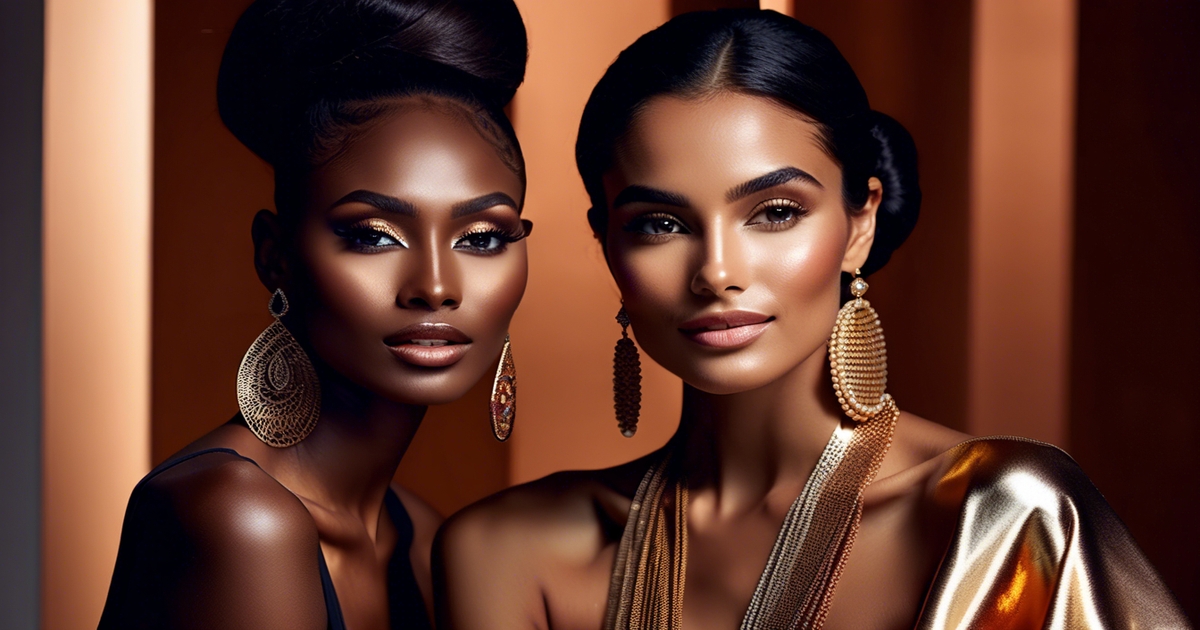
Undertone is the constant color underlying your skin tone. It directs what colors make brown skin seem bright, even and alive. Most people fall into three groups: warm, cool, or neutral. Understanding yours assists you in selecting clothing, cosmetics, hair dye and jewelry that harmonize with your skin, not clash with it.
Undertone determines how blue-, yellow-, or balanced-based colors read on you, so it's an easy filter for more intelligent selections.
The undertone myth
Not all brown skin has the same undertone. There's a spectrum–golden, olive, rose, or a mixture. Two folks that are the same depth can appear completely different in the same shirt because undertone dictates contrast and harmony.
Surface color can migrate with sun or seasons, but undertone remains consistent most of the time. Your tone might get darker in the summer, but that inner shade is still warm, cool or neutral. A few individuals experience a bit of variation when tanned, so double check using more than one technique.
Avert universal guidelines. Rather than 'brown skin best in X', it becomes, 'does this have a blue or yellow base, how does it sit on me'. Tailored suggestions win over mass-market promises.
The vein test
Stand by a window and look at the veins on your inner wrist. If they appear green-ish, your skews warm. Bluish or purple means cool. A combination usually indicates neutral. While this test is convenient, for deeper skin free, vein color can be difficult to discern, so verify by an additional method.
- My veins look: green → warm, blue/purple → cool, mixed → neutral
- If warm: try yellow-based reds, marigold, olive, camel, coral
- If cool: try blue-based reds, cobalt, emerald, fuchsia, charcoal
- If neutral: try soft white, teal, peacock, mauve, warm navy
Reference these notes when you shop to keep your choices consistent.
The jewelry trick
Test simple gold and simple silver against your bare skin in daylight. If gold lights you up, you probably run warm. If silver appears cleaner and brighter you probably run cool. If both look fine, you might be neutral.
This quick reference comes in handy for frames, bag hardware and watch cases.
| Undertone | Metals | Accessory colors |
|---|---|---|
| Warm | Yellow gold, bronze, copper | Tortoiseshell, warm tan leather, honey, olive |
| Cool | Silver, platinum, white gold | Gunmetal, cool gray, icy pink, navy |
| Neutral | Rose gold, soft gold, brushed silver | Taupe, cocoa, muted teal, soft berry |
The white paper method
Hold a white sheet by your face in daylight and observe how it affects your skin tone. If your skin glows with a yellow or golden cast, that indicates a warm undertone. Conversely, if it leans towards pink, rose, or blue, that suggests a cool undertone. A balanced or olive appearance indicates neutral undertones. This knowledge is essential for choosing colors that enhance your natural glow.
Utilizing seasonal color palettes like spring and summer can help you identify the right colors for your wardrobe. By noting your undertone and creating a brief list of "yes" colors, you can streamline your selections for clothing, jewelry colors, and even swimwear colors.
Incorporating the right colors into your style can significantly impact your overall colouring. A well-curated color palette based on your specific skin tone can accelerate choices for shirts, lip colors, and even hair hues, ensuring you always look your best.
What are the best colors for brown skin?
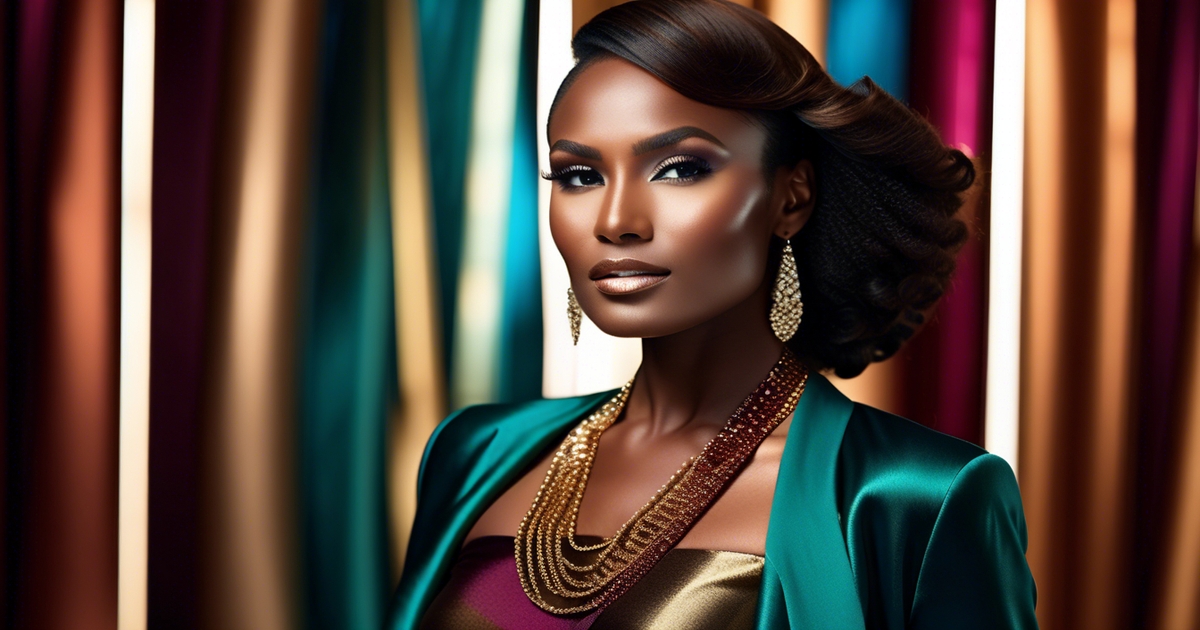
Go for colors that illuminate your skin tone and provide dimension — then blend them in combinations that seem effortlessly wearable. Aim for a range: jewel tones, earthy hues, vibrant brights, refined neutrals, and deep metallics. Create a seasonal color palette that you can mix and match throughout seasons and scenes.
1. Rich jewel tones
Emerald green, royal blue, violet and burgundy sit beautifully on brown skin because they complement its richness without overpowering it. Emerald, sapphire blue, and amethyst purple look luxe in satin, silk or velvet for evening, yet stand up in cotton for day. They frame the face, make eyes pop and couple beautifully with drama lips—deep reds, berry, burgundy or plum add a powerful yet pristine finish.
Go jewel tones for show-stopping moments—say, a royal blue suit, a burgundy slip or a violet blouse with streamlined pants. For balance, anchor with cream, taupe or soft gray. The contrast provides a crisp, assertive edge that comes across stylish not brash.
2. Warm earthy hues
Sweet peach, mustard, orange and taupe bring out the warmth in brown skin. Throw in olive green, rust and terracotta to complete the mix. These fall in that sweet spot between color and neutral, so they blend nicely throughout a week's worth of looks.
They shine in casual wear: a rust tee with light denim, a mustard knit with chinos, a peach shirt under a khaki jacket. For layering, keep base neutral (cream, beige or charcoal), then stack one warm tone for depth. These tones are so universally flattering–mens and womens pieces both come across so grounded and effortless in these colors.
3. Vibrant brights
Fuchsia, lime green, turquoise, and yellow add zing and establish a whimsical mood. They emphasize melanin and read contemporary in crisp cuts. Go for a fuchsia dress, lime tee with dark jeans or turquoise shirt with navy.
Pair them with plain shoes, subtle jewelry or a beige trench for balance. If you want an edge, test neon in small hits—neon trims, a bag or running shoes–then scale up if it feels right.
4. Sophisticated neutrals
Cream, white, taupe and beige form a powerful foundation that will still flatter brown skin, particularly in low-contrast ensembles. Soft blues and light greys contribute calm. Deep navy, charcoal grey and black provide a crisp delineation for work or night.
Let the base be the home for your prints OR one bold piece. This allows you move with seasons without a complete overhaul.
5. Deep metallics
Gold, bronze, and copper reflect the radiance in brown skin, providing an effortless lift. Metallic skirts, knit threads or copper bag work for day, sequins, lamé or satin suit night. Layer with jewel tones for high drama or cream and taupe for a toned, luxe mash-up.
Hair colors such as golden brown, honey blonde, warm auburn, copper, auburn and cinnamon highlight the skin's golden undertones.
- Emerald/sapphire/amethyst,
- Olive/mustard/rust/terracotta,
- Fuchsia/lime/turquoise/yellow,
- Cream/white/taupe/beige,
- Gold/bronze/copper,
- Soft blues/light greys,
- Deep navy/charcoal/black,
- Peach/orange/burgundy accents.
How to style clothes for brown skin
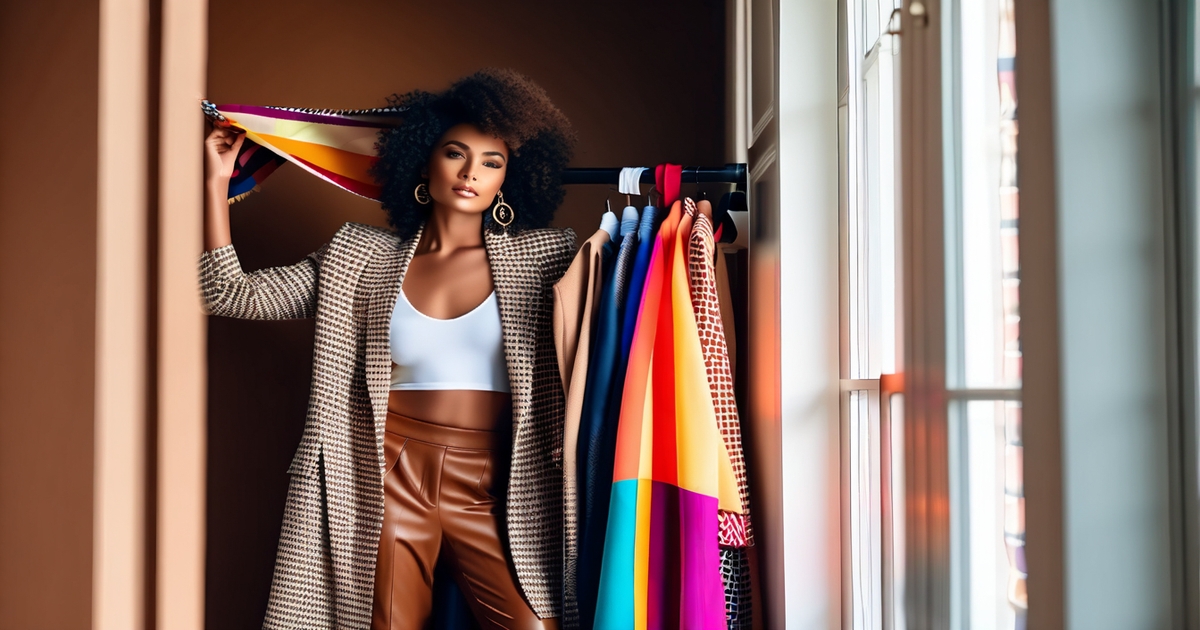
Your clothes should complement your undertone, not battle it. While most brown skin tones lean olive—neutral with a hint of green or gray—so greens, cool grays, navy and maroon tend to sit well, while golden yellows, oranges and rusty reds can battle the skin's cast.
Aim for balance: some contrast to add spark, plus harmony to keep the look calm.
| Goal | Tip | Why it works | Try this |
|---|---|---|---|
| Complement | Navy, charcoal, cool beige | Neutral anchors flatter olive tones | Navy blazer, gray trousers |
| Contrast | Crisp white + bright bottom | Clean edge frames warmth | White shirt + cobalt skirt |
| Harmony | Earthy tones (olive, taupe, cocoa) | Echoes natural depth | Olive shirt + brown chinos |
| Pop | Maroon or deep teal accent | Bold yet not brash | Maroon knit over gray tee |
| Caution | Skip golden yellow, orange, rusty red | Can clash with undertone | Swap for mustard-olive or burnt umber |
Creating contrast
High contrast makes edges crisp against brown skin. Pair bold with neutral: cobalt with gray, forest green with black, or maroon with stone. A white shirt provides a bright frame – give it a contemporary twist with color below the waist.
White tops with bright bottoms read fresh and crisp. Experiment with a white linen shirt and emerald trousers, or white tee under a navy suit. If white proves too stark, gravitate toward soft ivory or light gray for a gentler contrast.
- Dark base, light layer: charcoal dress, pale trench
- Light base, dark layer: cream tee, black denim jacket
- Neutral outfit, one bold shoe: navy suit, maroon loafers
- Color block: teal top, beige pant, black belt
- Metal mix: cool silver jewelry to lift warm browns
Add contrast to your features. If you've got dark hair and eyes, the high contrast looks dramatic. If you're softer in coloring, pick mid-contrast pairs like slate + olive.
Harmonizing shades
Mix nearby shades for run. Earthy tones—olive, taupe, cocoa, moss—complement brown skin without blanching it, particularly for olive undertones that skew green or gray.
Undertone match first. Cool-leaning brown sings with slate, navy, emerald. Neutral-olive favors dusty greens and grays. Stay away from golden yellows, oranges and rusty reds. They can spike warmth in a way that clashes.
Layer like colors for dimension. Think olive shirt, darker olive jacket, brown belt. Introduce texture—knit, suede, linen—to keep the pile living.
Let me first explain with a color wheel. Select neighbors (similar) for convenience, or intersect the wheel with toned down, muted versions to avoid a shock.
Playing with patterns
Prints bring personality without screaming. Select prints that feature navy, gray, green or maroon—they resonate with typical undertones in brown skin and meld the look.
Contrast hectic prints with solids. A bold check shirt comes to rest beneath a charcoal suit. A floral skirt falls better with a simple slate tee. This allows the emphasis to remain on you, not merely the pattern.
If a print features daring colors like orange, let cooler tones prevail. A teal and little rust flake scarf works when the base remains cool.
Try patterned accessories to dip your toe into the water. A striped tie, olive-print scarf or marled gray beanie provides some pizazz without taking over the face.
Colors beyond your wardrobe
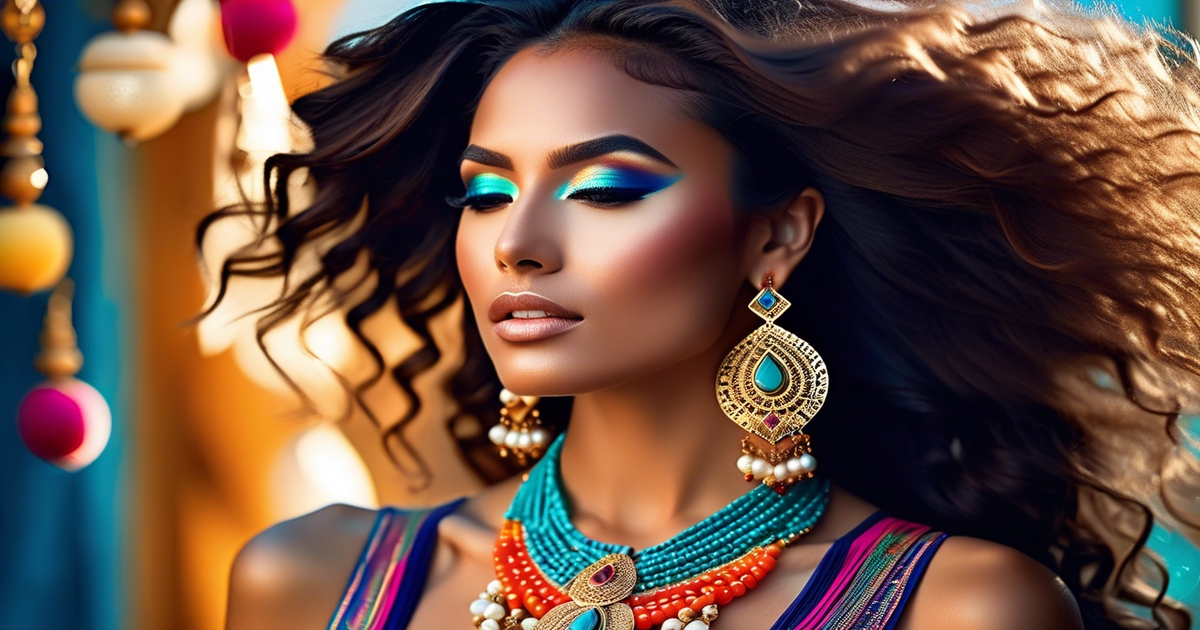
Color is best when it moves with you—face, hair and jewelry too. Complimentary undertones in these areas creates a together look and prevents shades that bleed you out when they are too close to your skin tone. Seasons can guide choices too: brighter, punchier hues in spring and summer; deeper, refined tones in fall and winter.
Personal color analysis is subtle—there are 24 different types—so consider these observations to be guidelines, not commandments.
Makeup
Start with undertone. A foundation that coordinates depth and undertone—golden, olive, or neutral—lays a real base. If the shade is too light or cool, it can look ashy, particularly at the mouth and under eyes.
Pair it with a concealer no more than one shade lighter for equilibrium. Bringing blush and lips to life, warm terracotta, brick rose, berry and cinnamon blushes read natural on brown skin. Raspberry, caramel nude, deep cherry and burnt coral lip colors pop without appearing harsh.
For summer, experiment with saturated coral or fuchsia; in winter, grab a burgundy or mulled plum for a sleek, sharp vibe. Eyes can take color. Jewel tones—emerald, royal blue, amethyst—pop against brown skin. Bronze, copper and golden shadows add warmth and glows.
Shun chalky pastels if they go grey; choose creamy, high‑pigment formulas instead. Highlighter, on the other hand, should reflect your radiance. Gold and bronze flatter, while silvery metallics can look harsh if your undertone is warm.
If you're neutral or cool, champagne or soft rose‑gold sits nicer. ALWAYS swatch in daylight, to check for cast.
Hair
Deep, warm colors adore brown skin. Deep espresso, chestnut and auburn add depth. Face-framing caramel or honey ribbons brighten the complexion without streaky contrast!
Bold can be smart, not screaming. Burgundy appears sophisticated in the winter, while teal streaks resonate with summer vibes. Even platinum can work if you balance the brows and makeup and keep the tone creamy rather than icy.
Match undertone: warm skin with warm dye; cool‑leaning skin with ash or cool reds to stay harmonious. Let COLOR beyond your wardrobe tell your story.
Let hair be the anchor for your palette—when hair skews warm, lean into gold jewelry and earthy makeup. When cool, pivot to gunmetal accents and berry lips.
Jewelry
Gold, bronze and rose gold accents warmth add a soft glow. Metals that conflict with your undertone can come across harsh. Warm skin often goes best with yellow gold, while neutral or cool undertones can wear rose gold or light platinum.
Gemstones provide fresh color contrast. Emerald, sapphire, amethyst, turquoise, and garnet sit well against brown skin, shifting with seasons. Turquoise and citrine feel lively in summer, while emerald and ruby feel refined in winter.
Earthy stones—tiger's eye, smoky quartz—ring with fall tones like olive, mustard, rust.
- Yellow gold hoops, bangles, and layered chains
- Rose‑gold studs with morganite or peach moonstone
- Bronze cuffs with textured finishes
- Mixed‑metal sets that keep gold dominant
- Gem accents: emerald, amethyst, turquoise, garnet, onyx
The influence of light and texture
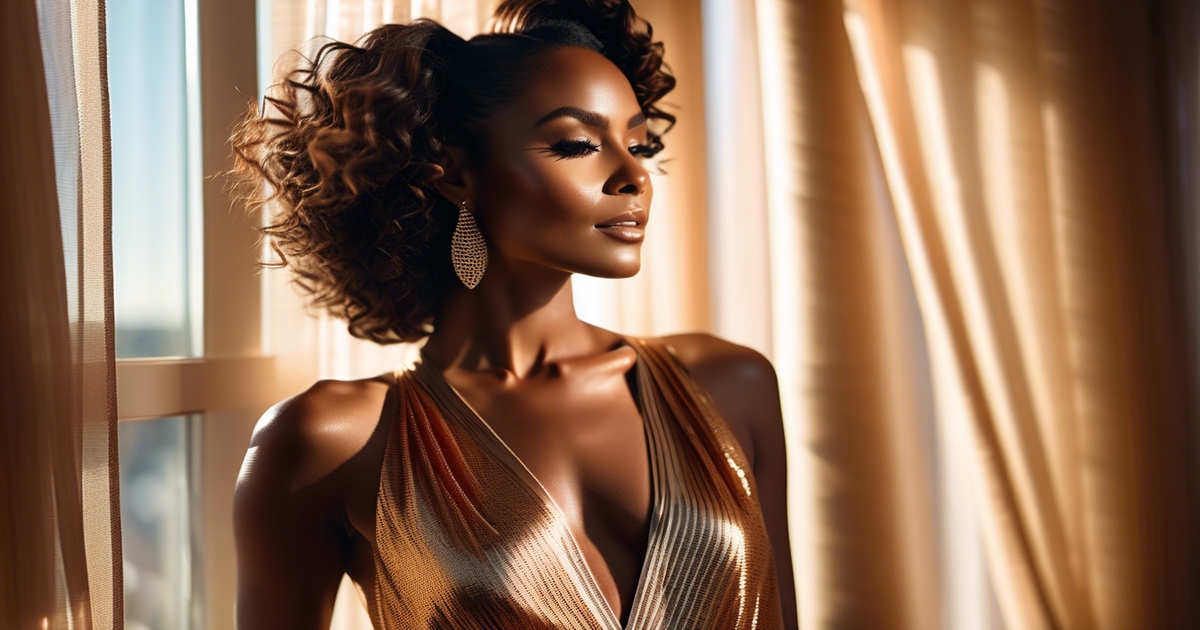
Light and texture alter the way colors read on brown skin. All of these can elevate or flatten a hue, alter contrast and contour depth. Warm light tends to accentuate red notes and increase perceived brightness, and cool light can shift skin toward a bluish cast.
Fabric sheen, weave and weight alter color intensity and how edges pick up light. Try outfits in different environments to ensure colors remain flattering from day to night.
Natural vs. artificial light
Midday sun is impartial and reveals true color, but early morning and late afternoon add warmth that can make terracotta, coral and mustard sing on brown skin. Under cool indoor LEDs, these same shades may skew dull, and deep skin can soak up warm tones and look a bit blue.
To offset this, use stronger, purer pigments like emerald or royal. Select colors that are sufficiently saturated to sustain under combined illumination. Jewel tones, crisp whites and bold primaries continue to linger in offices, metros and evening trysts.
Very soft pastels can wash out inside—ground them with a deeper belt, scarf or blazer. Inspect make-up and jewelry in a window and under a lamp. Gold highlighter can go brassy in cool light, while rose-gold retains warmth without shine.
Brown-based lip colors remain, but blue-reds may appear brilliant in daylight but too harsh under cool LEDs. Turn your palette with the seasons. Short winter days and cooler light prefer saturated tones—ink blue, pine, plum.
Long summer light accentuates sun-washed colors—papaya, olive, sky. Shoot for light that retains local color in shadow—over-lighting to "brighten" dark skin flattens depth and battles its nature tone.
If you shoot outfits, a gentle rim light separates skin from dark backdrops (Zone 2 skin vs. 1–3 backgrounds) without blowouts that sweep away texture.
Fabric's hidden role
Sheen multiplies color, especially when it comes to vibrant colours that complement brown skin tones. Satin, silk, and polished cotton throw light back and intensify pigments like ruby and teal, delivering immediate results on dark skin. Conversely, matte knits, brushed wool, and sueded leather absorb light, muting colors into a peaceful, uniform landscape.
Texture creates depth, which is crucial for stylish colors. Ribbed knits, bouclé, linen slub, and raw silk generate miniature highs and lows that catch light, providing drama without loud prints. This is particularly beneficial when lighting is flat, as it prevents colors from looking muddy, especially on different skin tones.
Some textures fatten, while others sharpen. A navy silk looks ink-deep against dark skin, while that same dye on jersey appears softer. If your lighting is cool, a slight sheen counters the bluish cast, while matte cotton keeps things grounded and honest in warm lighting.
Try blends for ease and immediacy. Wear a satin blouse beneath indoor LEDs, then stroll into the shade outside. Observe whether the color remains appealing on your specific skin tone.
Remember, meters and presets often misread richer skin tones, so trust your eye and maintain references with diverse skin colours and illumination. Strive for depth, conserve texture, and let local color remain apparent in shadow.
Colors to approach with caution
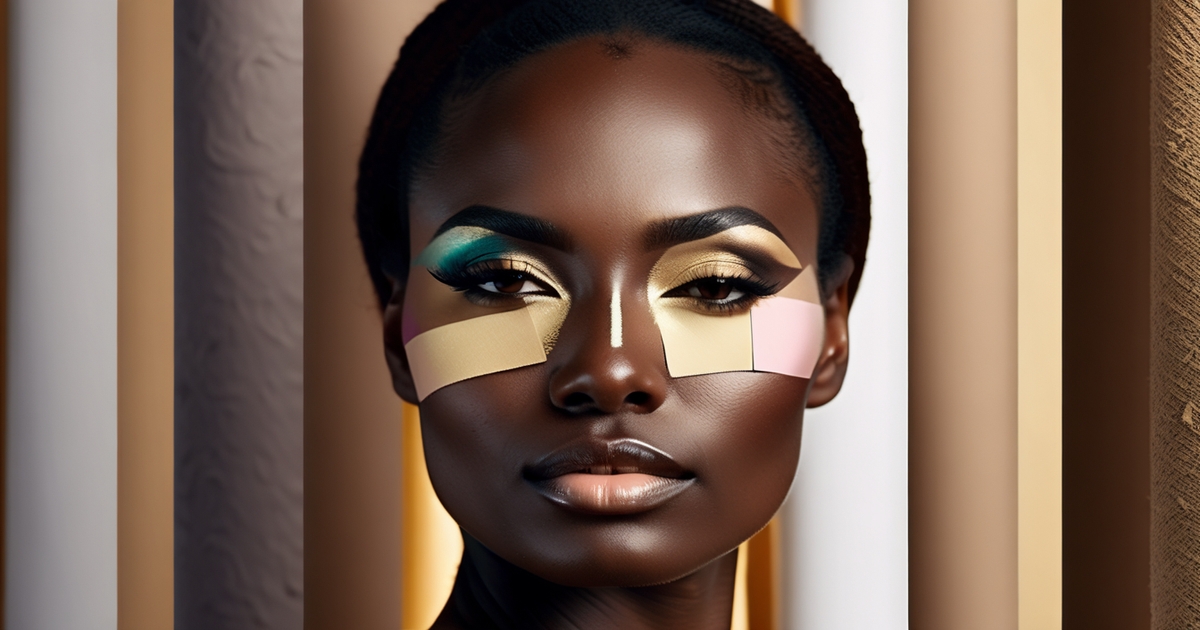
Certain colors can mute brown skin instead of elevate it. We're aiming for crisp contrast and evident depth, so see how a color plays against your undertone and depth.
Muddy beiges and skin-adjacent neutrals are the worst offenders. When beige, camel, taupe or light brown sits a little too close to your skin color, the lines dissolve and the ensemble reads flat. It can look like clothes and skin bleed together. Shift to warmer or deeper neutrals that break clean from your tone: cocoa, espresso, warm caramel, rich tan, or cream with a hint of gold. If you adore beige, spice it up with crisp trim, a dark belt, or striking jewelry.
Washed-out pastels don't fare much better. Mint, soft lavender, powder blue and pale peach leach out warmth, particularly in low light. They can appear chalky against richer skin tones. Swap them for saturated versions with more pigment: emerald over mint, amethyst over lavender, coral over peach, or a strong sky blue instead of baby blue. If you want a pastel, anchor it with a column of ink navy, deep plum, or charcoal, to maintain your feature definition.
Cool grays, in particular, can make brown skin look dull. Very cool grays lean blue, which can throw a tired tone. Opt for mid or deep charcoal with a warm base, or go for graphite, slate, or greige that skews a bit beige. The same goes for stark white and very pale yellow. Pure white can be contrastingly harsh. Very pale yellow can read sallow. Go for soft white, cream, ivory, ecru, or marigold and honey instead.
Greens are colors to watch or whatever. Olive and army greens accented with grays can either clash or feel muddy, particularly if they almost match your skin but fall just a tad off. Cool greens can flatten warmth too. Opt for greens with clarity and heat: emerald, forest, moss with gold, or chartreuse with bite.
Earthy tones like olive green, mustard yellow, and rust are nuanced: beautiful on some, tricky on others. If they deaden your glow, go brighter or deeper–saffron over mustard, terracotta with red not brown, or a clear spruce over dusty olive.
Reds and metallics require undertone harmony. Dark reds with a brown tint can appear weighty. Icy wine may come off as severe. True red, tomato or cherry tend to land better. For metals, mismatch can be harsh-looking. Pick gold for warm, silver for cool, rose gold or bronze for neutral.
Conclusion
To sum it up– brown skin wears color like a boss. Warm gold, rich green, deep plum and bold red pop in daylight and night. Soft peach, coral and cream offer an effortlessness for everyday wear. Cool navy, cobalt and crisp white provide clean cuts and sharp looks. In warm sun or cool shade, light changes color quickly. Shiny cloth raises color. Matte cloth mellows it.
A quick note from real life: a cobalt shirt and tan sandals. Clean, bold and it works in every city. Or a rust slip dress tied up with a gold chain. Low frills, lots of impact.
To test out the next step, choose one hue to wear today. Drape it 'round for a walk or call. Try it on and see how it feels. Then construct from there.
Frequently Asked Questions
How do I find my undertone if I have brown skin?
Check your veins in natural light to determine your skin tone. Greenish veins imply a warm undertone, while bluish or purple indicates a cool tone; mixed veins suggest neutral skin tones. Gold jewelry colors complement warm undertones, while silver enhances cool skin tones. Neutral colors look good on both!
What clothing colors look best on brown skin?
Jewel tones, such as emerald, sapphire, and ruby, pop beautifully against different skin tones. Bright colors like cobalt and fuchsia stand out, while earth tones like terracotta and olive shine in seasonal color palettes.
Which colors should I be careful with?
Super pale pastels and muddy taupes can wash out certain skin tones, while vibrant colors like neon yellows or lime may overpower some undertones. If you adore bright colors, offset them with deeper accents or richer textures.
How can lighting change how colors look on my skin?
Daylight reveals outfits in their true color palette. Warm indoor light can enhance reds and oranges for dark skin tones, while cool LED light can make blues sharper, helping you choose the right colors.
What makeup shades complement brown skin?
Rich berry, brick, and coral lips flatter most skin tones and undertones. Warm gold, bronze, and plum eyeshadows are great choices. For your blush, go with terracotta, rose, or apricot to complement your overall colouring.
How do I style prints and textures for brown skin?
Opt for prints with high contrast and for saturated colors that complement different skin tones. Metallics like gold and copper add warmth, while textures like satin and velvet provide depth without requiring loud colors.
Do accessories and hair color matter?
Yes. Gold, amber, and tortoiseshell warm the visage, while silver and rose gold update those with cool skin tones. Brown skin tones look great with hair colors such as espresso, chestnut, caramel, or auburn, so choose shades that mirror your specific skin tone.